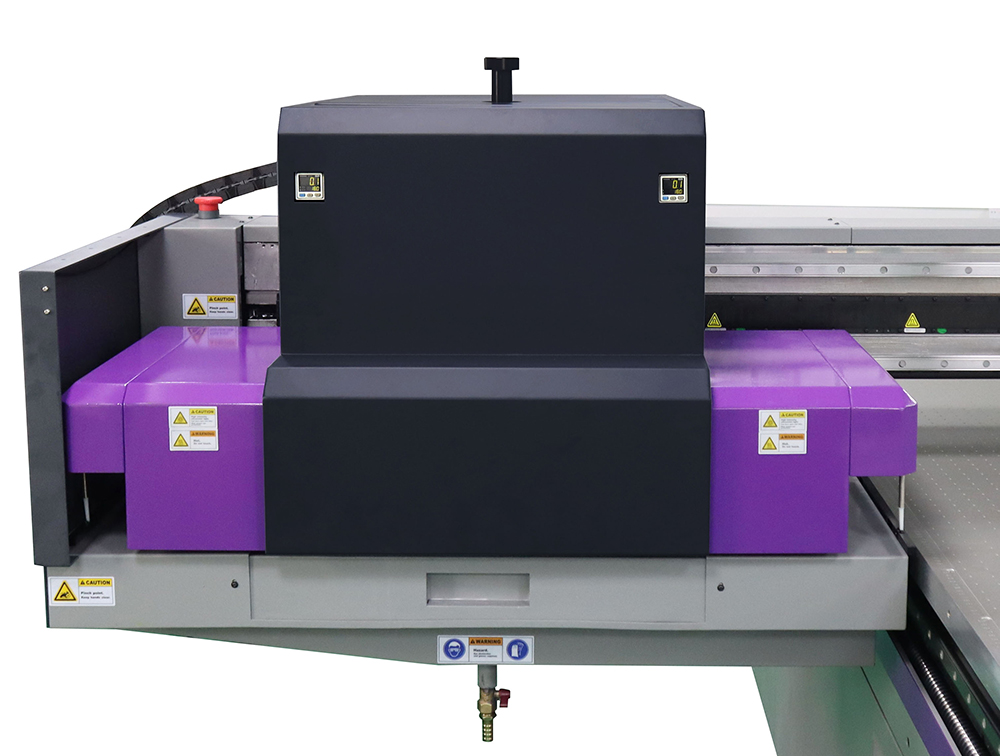Can UV Flatbed Printers Be Used for Printing on Textiles?
In the realm of digital printing, UV flatbed printers have emerged as versatile and powerful tools, revolutionizing the way images and designs are applied to a wide array of substrates. From rigid materials like glass, metal, and ceramics to flexible ones such as plastics and vinyl, these printers have demonstrated their capability to produce high-quality, durable prints. One area where their application has garnered considerable interest is textile printing. The question that often arises is: Can UV flatbed printers be used for printing on textiles? To answer this, it’s essential to delve into the technology behind UV flatbed printers, the unique characteristics of textile substrates, and the feasibility of using these printers for textile printing.

Understanding UV Flatbed Printers
UV flatbed printers operate on a principle that involves the use of ultraviolet (UV) light to cure or solidify inks almost instantly upon contact with the substrate. This process is known as UV curing. The inks used in these printers are specially formulated to be sensitive to UV light. When exposed to UV radiation, these inks undergo a chemical reaction that transforms them from a liquid state to a solid, creating a durable and smudge-resistant print.
One of the significant advantages of UV flatbed printers is their ability to print on a vast range of materials, including those that are not traditionally absorbent. This is because the UV-curing process does not rely on the substrate’s absorbency; instead, it forms a thin layer of cured ink on the surface. This makes UV flatbed printers ideal for printing on non-porous materials like glass and metal, where conventional inkjet printers would struggle.
The Characteristics of Textile Substrates
Textiles are materials made from fibers, which can be natural (such as cotton, wool, and silk) or synthetic (like polyester, nylon, and acrylic). Unlike rigid substrates, textiles are flexible and often have a certain degree of stretchability. They also vary greatly in terms of absorbency, texture, and thickness. These characteristics pose unique challenges for printing processes.
Traditional textile printing methods, such as screen printing and dye sublimation, have been tailored to accommodate the properties of textile substrates. Screen printing involves pressing ink through a mesh screen onto the fabric, while dye sublimation uses heat to transfer dye onto the textile, where it turns into a gas and then solidifies, bonding with the fibers.
The Feasibility of UV Flatbed Printing on Textiles
When considering whether UV flatbed printers can be used for textile printing, several factors need to be taken into account:
Ink Adhesion and Flexibility: One of the primary concerns is the adhesion of UV-cured inks to textile fibers and the flexibility of the printed area. Textiles are subject to frequent bending and stretching, which could potentially cause the printed ink to crack or peel off. However, advancements in ink formulations have led to the development of more flexible UV inks that can better withstand the mechanical stresses associated with textile use.
Absorbency and Ink Penetration: Unlike rigid substrates, textiles have varying degrees of absorbency. UV inks, which are designed to cure on the surface, may not penetrate the fibers deeply. This could result in a print that feels more like a surface coating rather than an integral part of the fabric. Nevertheless, for certain applications, such as decorative or promotional textiles, this may not be a significant issue.
Print Quality and Resolution: UV flatbed printers are known for their high-resolution printing capabilities, which can produce detailed and vibrant images. This is particularly advantageous for textile printing, where intricate designs and sharp colors are often desired. The ability to print directly onto the fabric without the need for transfer papers or additional processing steps can also enhance the overall print quality.
Production Efficiency and Cost: UV flatbed printers offer fast printing speeds and the ability to print on demand, which can be beneficial for textile manufacturers looking to reduce inventory costs and respond quickly to market demands. However, the initial investment in a UV flatbed printer and the cost of specialized inks and maintenance should be considered when evaluating the overall cost-effectiveness.
Post-Processing Requirements: Textiles printed with UV flatbed printers may require additional post-processing steps, such as heat setting, to ensure the durability of the print. Heat setting helps to fix the ink to the fibers, improving its resistance to washing and wear. These additional steps need to be factored into the production process.
Practical Applications and Considerations
UV flatbed printers have shown promise in specific textile printing applications, such as:
Decorative Textiles: For items like throw pillows, tablecloths, and tapestries, where the focus is on aesthetic appeal rather than functional properties, UV flatbed printing can offer high-quality, vibrant prints.
Promotional and Apparel Textiles: T-shirts, bags, and other promotional items can be printed with UV flatbed printers to achieve detailed designs and brand logos. However, the flexibility and comfort of the printed fabric need to be carefully assessed.
Technical Textiles: In industries where textiles serve a functional purpose, such as in filtration or medical applications, UV flatbed printing could be used to apply precise markings or coatings. However, the durability and performance of the printed textile in its intended use must be thoroughly tested.
In conclusion, UV flatbed printers can indeed be used for printing on textiles, but with certain caveats. The success of UV flatbed printing on textiles depends on the choice of ink, the specific properties of the textile substrate, and the post-processing steps taken to ensure the durability and flexibility of the print. While UV flatbed printers offer numerous advantages in terms of print quality, resolution, and production efficiency, they also present challenges that need to be carefully managed. As technology continues to advance, it is likely that UV flatbed printing will become an increasingly viable option for a wider range of textile printing applications.
